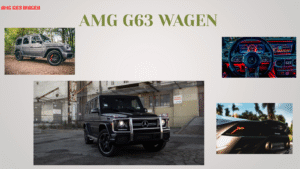Luxury Cars ka Grey Market: How to Import/Export Exotics Legally (Without Scams)
Although the world of exotic and luxury cars is exciting, purchasing or selling expensive cars abroad can be fraught with hidden fees, legal issues, and scams. The “grey market”—unofficial channels where cars are imported/exported outside of manufacturer-approved networks—is where many investors and enthusiasts go to find rare models at reduced prices.
However, how do you get around this lucrative but dangerous area without being duped? This 1,500-word manual deconstructs:
✅ What is the Grey Market? (Illegal versus legal)
✅ Top Grey Market Import/Export Countries (Dubai, USA, Germany, Japan) ✅ How to Legally Import Luxury Cars ✅ Typical Scams & How to Avoid Them
✅ Case Studies: Achievements & Mistakes ✅ Hidden Costs (Customs, Taxes, Compliance)
1. What is the Grey Market for Luxury Cars?
Automobiles purchased in one nation and imported into another without the manufacturer’s consent are referred to as being on the “grey market.” Grey-market car warranties are frequently void by brands like Mercedes, Porsche, and Ferrari, but it’s not against the law if done properly.
Grey Market vs. Black Market
✅ Grey Market: Unofficial but legal (e.g., importing a used Ferrari from Japan to India).
❌ Black Market = Illegal (smuggling, phoney VINs, stolen cars).
Why Do Buyers Use the Grey Market?
- Lower Prices (Avoid local dealer markups).
- Access to Rare Models (Some cars aren’t officially sold in certain countries).
- Better Condition Used Cars (Japanese and German markets have well-maintained exotics).
2. Best Countries for Grey Market Luxury Cars
🌯🌵 Japan
Why? cars with low mileage and good maintenance (because of rigorous inspections).
Popular models include the Nissan GT-R, Toyota Century, and uncommon Lexus models.
Cars damaged by flooding should be avoided (see CarVX reports).
🇩🇪 Germany
Why? Premium Mercedes, Porsche, and BMW vehicles at affordable costs.
Mercedes-AMG GT, Porsche 911 Turbo, and Audi RS6 are popular models.
Be wary of odometer fraud, which is prevalent in Eastern Europe.
🇺🇸 USA
Why? Depreciation and a large inventory make used supercars more affordable.
Popular models include the Tesla Plaid, Dodge Hellcat, and Corvette Z06.
Cars with salvage titles (rebuilt after crashes) are something to be wary of.
🇦🇪 UAE (Dubai)
Why? Rich owners sell lightly used cars quickly, and there are no taxes.
Lamborghini Urus, Rolls-Royce Cullinan, and G63 AMG are popular models.
Be wary of “export-only” scams, which are fraudulent sellers.
3. Step-by-Step Guide to Legal Grey Market Importing
Step 1: Research & Budgeting
Verify your nation’s import regulations (for example, India has stringent age and emission regulations).
Include shipping, taxes, and customs duties; these can raise the cost of the car by 50–150 percent.
Step 2: Find a Reliable Seller
Use trusted platforms:
Goo-Net Exchange in Japan
USA: Don’t forget your caravan
Dubai: Dubizzle
Verify the car’s history (Carfax, Autocheck, Japanese auction sheets).
Step 3: Hire a Customs Broker
A competent broker manages compliance, duties, and paperwork.
Steer clear of “under-invoicing” scams, which use fictitious low prices to cut taxes.
Step 4: Shipping & Logistics
Ro-Ro (roll-on/roll-off) shipping is less expensive than container shipping, which is safer.
Because there is a real risk of damage, insure the vehicle while it is in transit.
Step 5: Customs Clearance & Registration
Send in the original title, the bill of lading, and the EPA/DOT paperwork (for imports from the USA).
Pay import duty, which varies by nation (for example, India charges 100%+ for cars over $40k).
4. Biggest Grey Market Scams & How to Avoid Them
First Scam: “Clone Cars” (Fake VINs)
How it works: Scammers impersonate legitimately imported vehicles’ VINs on stolen vehicles.
Red flags include no service history and mismatched VIN plates.
Solution: Always hire an agent or do a physical inspection of the vehicle.
Scam #2: Wire fraud involving “Non-Existent Cars”
How it operates: After requesting a deposit, phoney sellers vanish.
Red flags include refusal to video call and prices that seem too good to be true.
Use escrow services, such as Escrow.com, as a solution.
“Salvage Title Misrepresentation” is the third scam.
The process involves rebuilding a wrecked vehicle and selling it with “clean title.”
Red flags: new paint jobs and no accident history report.
Demand complete auction sheets (for Japanese imports) as a solution.
5. Hidden Costs of Grey Market Imports
Extra fees surprise a lot of buyers:
Customs duty (varies by country; for example, 2.5% in the USA and 100%+ in India).
Insurance & Shipping ($1,500–$5,000, based on distance).
Changes for Compliance (conversions to right-hand drives are required in certain countries).
taxes (luxury tax, GST, and VAT).
Case Studies from Real Life
Success Story: 30% Savings with a Dubai G-Wagon
A businessman from Mumbai paid ₹2.5 crore to import a 2022 Mercedes G63 from Dubai, whereas the local price was ₹3.5 crore.
Important Step: Employed an inspector from Dubai to check the vehicle before shipping.
The “Ferrari 488” that was a kit car is a disaster story.
The “Ferrari 488” that a Canadian collector purchased from Ukraine was actually a body-kitted, rebuilt Toyota MR2.
The pre-purchase inspection should never be skipped.
Final Verdict: Is the Grey Market Worth It?
✔️ YES if:
Rare models that aren’t available locally are what you want.
Without a manufacturer’s warranty, you’re fine.
You exercise appropriate due diligence.
NO if
Hidden costs are unaffordable.
You refuse to check sellers.
Next Actions
Participate in grey market forums, such as PistonHeads and TeamBHP.
Look for a reliable importer and get references.
To test the process, start small by importing a less expensive luxury vehicle.
Do you want a legal car import checklist? Tell me, and I’ll adapt it to your nation.














Post Comment